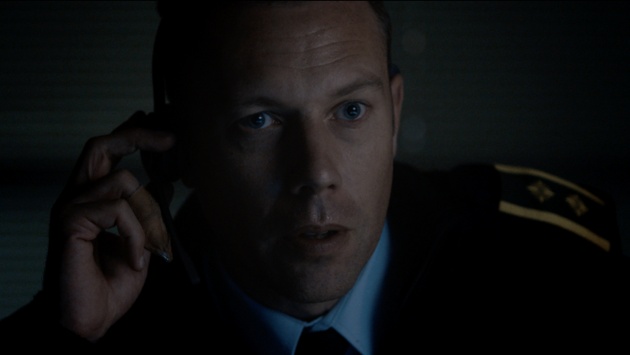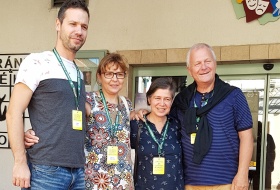Images and Idols

The minimalist Danish thriller The Guilty (Den Skyldige) by Gustav Möller won two awards at this year’s Jameson CineFest in Miskolc (Hungary): the Emeric Pressburger Award (the main prize of the festival) and the prize of the Ecumenical Jury. The ecumenical jury awarded the film “for its capacity to provide impulses for its viewers to reflect on personal moral judgements in everyday life concerning oneself and the other. As part of it, the film also holds up the value of humility towards the other person. The jury also appreciated the way of using traditional genre tools as a means of expression in ethical discourse.”
In Gustav Möller’s first feature film, the standby dispatcher, suspended police officer, Asger Holm works against the clock to save a kidnapped woman whose emergency call he happened to answer. The tense 85 minutes of the movie takes place in real time at a 112-call centre. Together with the dispatcher on duty, the audience also relies on his/her own imagination to put together the events (and perhaps reality) from the information pieces or rather fragments available, listening to voices and sounds coming from the far end of the line.
One of the director’s clear intentions was to draw attention to the concept of empathy. In an interview, he said: "At the start of the film, Asger is very judgmental and then some kind of empathy awakes in him. We’re also playing with the audience’s expectations and prejudices – we’re all quick to create images of who someone is."[1]
"You shall not make for yourself an image." We rarely think of the second commandment as containing the prohibition of making false images of the other person. Yet our relationship with God determines our relationship with ‘the image of God’ - and the false representation of ‘the image of God’ is disturbing or even destroying our relationship with God. Making false images of ‘the other’ has its dangers. The image lives in me before I meet the other person. This image is so strong that the encounter with the other person cannot correct it, so I recognize only those characteristics of the other that fit the image I have created, and thus force reality to evolve according to that image - that is, my attitude to the other person is still determined by the original image, which ultimately rises above me and I can only submit myself to it with blind obedience. In biblical or theological language, this is nothing else but idolatry. Making false images of our neighbours – and of ourselves – is distorting ‘the image of God’; depriving the other person and of ourselves of humanity, turning the other person and ourselves into mere objects.
The film raises a number of questions concerning this. Why do we need these false images? How can we break down these idols? Are we able to face the real other and our real selves? The film’s protagonist, who is trying to save others, needs to be saved as well, just like we, the viewers do.

